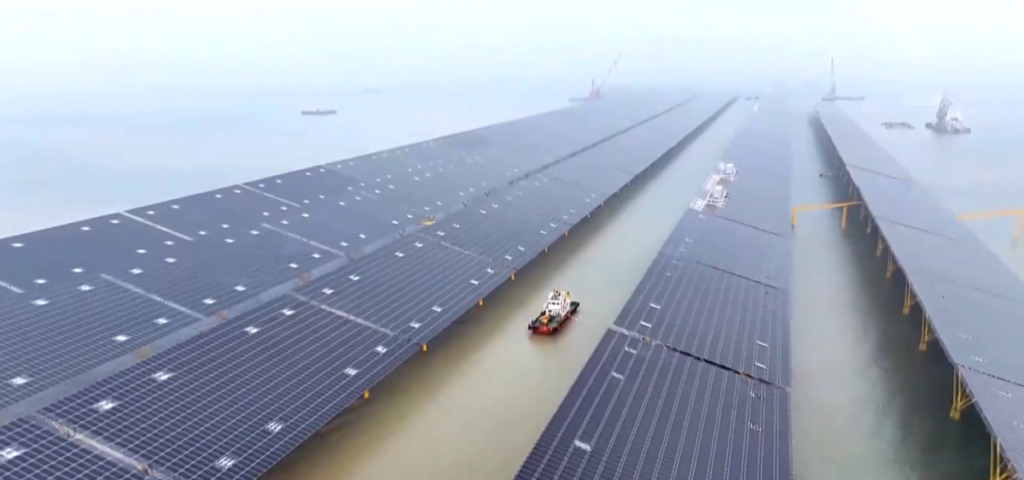Researchers in Saudi Arabia have compared the performance of PV plants mounted on the ground with those of off-shore solar facilities and have discovered that floating installations benefit from the cooling effect of the seawater.
Researchers from the King Fahd University of Petroleum & Minerals of Saudi Arabia have conducted a comparative study into experimental solar -driven photovoltaic (SFPV) and solar -PV (GSPV) -systems mounted on the ground -systems in an artificial intelligence system (AI) system (AI) system and the system and the system and the system and the system and the system and the system -system system and the system -system system system and the system -system system system and the system -system system system and the system -system system system and the system -system system system and the system system system and the system system system and the system system system and the system system system and the system system system and the system system system and the system system system and the system system system and the system. Both setups.
“The SFPV and GSPV systems are installed and tested under the same climatic conditions of Azizia, Kingdom or Saudi Arabia and in-depth evaluated with regard to produced electrical current, PV surface panel temperature, PV-DC voltage, PV-DC stream and Energy Point and efficiency,” ” “The second goal of this study focuses on the application of advanced artificial intelligence models for predicting electrical power generation and PV surface panel temperature in both SFPV and GSPV systems, an area that is not uncommonly investigated.”
Both the SFPV and the GSPV setups consisted of two bifacial panels with a maximum power of 545 W. Both setups also include an inverter, a battery and a set of data loggers and measuring devices. The SFPV system was installed 25 m from the Bahrain Gulf Coast in Azizia at a depth of 1.5 m, while the GSPV was installed on the land in the area. The SFPV also used a wooden frame, reusable plastic drums, a support structure made of stainless steel, steel ropes, hooks and anchoring of concrete blocks.
The analysis showed that the average ambient temperature fluctuated from 15.35 ° C during the long term to 36.0 ° C in July, with a relative humidity of 31.65% in June and a peak of 68.23% in December. The global horizontal solar intensity on a daily basis varied from 3.30 kWh/m2/day to 7.74 kWh/m2/day, with a general average of 5.64 kWh/m2/day throughout the year. Moreover, the average wind speed varied at 10 m above sea level between 3.71 m/s in October and 5.42 m/s in June.
Measurements from both devices were performed in June 2024 and showed that the SFPV system improved the average PVelectric power and has accumulated the daily net daily electrical energy with 59.25% and 69.70%, compared to the system mounted on the ground. That was partly due to the cooling effect of the seawater. While the average measured on the surface of the GSPV was 58.40 ° C, the SFPV had a 39.5 ° C, a reduction of 32.36%.
To predict the possibilities of these systems, the group has combined the Brown-Bear optimization algorithm (BBOA) with the long short-term memory (LSTM) technology. BBOA is inspired by the natural behavior of brown bears and is used to refine the hyper parameters of the LSTM model. Hyper parameters are the external configurations set before the LSTM learning process starts, with regard to their operation. The LTSM then uses its ability to understand patterns to predict the results.
“Datasetpartitioning was done with the help of 70/30 splits, in which 70% of the data set was allocated for training and 30% for testing,” the group explained. “The input variables for the model include characteristics such as time, solar radiation, PV current, PV voltage and ambient temperature, while the target outputs are electrical power and PV surface temperature.”
The LSTM-BBOA then became a benchmarkt against three other models: Light Gradient-boosting machine (LightGBM), only LSTM and Gated Recurrent Unit (Gru). According to the results, the LSTM-BBOA model achieved superior robustness in both SFPV and GSPV systems. In the case of the electricity of the SFPV, it reached a deterministic coefficient (R²) of 0.9998. For compression, the LSTM only received 0.9966 and the LightGBM had 0.9844.
The analysis showed that the Hybrid LSTM-BBOA revealed a “robust” performance with minimal average absolute error (Mae), root-average square error (RMSE) and variation coefficient (COV) values of 0.4884, 0.5031 and 0.1938 for the SFPVPresprodoctacties. While the independent LightGBM showed the maximum Mae, RMSE and COV values of 5,7036, 12,6872 and 20,3577 respectively.
“The LSTM-BBOA model achieved peak efficiency coefficient (EC) and Total Index (OI) values of 0.9998 and 0.9931 respectively, which exceed the scores of the LSTM model of 0.9969 and 0.9472 for SFPV streamriatry,” Const “For comparison: LightGBM registered the lowest EC and OI values, respectively at 0.9844 and 0.9190.”
Their findings were presented in “Benchmarking reinforcement learning and prototyping development of the floating solar energy system: experimental research and LSTM modeling combined with brown-bear optimization algorithm“Published in Energy conversion and management.
This content is protected by copyright and may not be reused. If you want to work with us and reuse part of our content, please contact: editors@pv-magazine.com.

